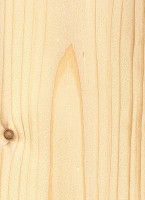 |
Common Name(s): Norway Spruce, European Spruce, German Spruce Scientific Name: Picea abies Distribution: Northern and central Europe Tree Size: 115-180 ft (35-55 m) tall, 3-5 ft (1-1.5 m) trunk diameter Average Dried Weight: 25 lbs/ft3 (405 kg/m3) Specific Gravity (Basic, 12% MC): .32, .41 Janka Hardness: 380 lbf (1,680 N) Modulus of Rupture: 9,130 lbf/in2 (63.0 MPa) Elastic Modulus: 1,406,000 lbf/in2 (9.70 GPa) Crushing Strength: 5,150 lbf/in2 (35.5 MPa) Shrinkage: Radial: 3.9%, Tangential: 8.2%, Volumetric: 12.9%, T/R Ratio: 2.1 |
Color/Appearance: Norway Spruce is typically a creamy white, with a hint of yellow and/or red.
Grain/Texture: Norway Spruce has a fine, even texture, and a consistently straight grain.
Rot Resistance: Heartwood is rated as being slightly resistant to non-resistant to decay.
Workability: Easy to work, as long as there are no knots present. Glues and finishes well, though it can give poor (blotchy and inconsistent) results when being stained due to its closed pore structure. A sanding sealer, gel stain, or toner is recommended when coloring Spruce.
Odor: No characteristic odor.
Allergies/Toxicity: Although severe reactions are quite uncommon, Spruce in the Picea genus has been reported as a sensitizer. Norway Spruce in particular has been reported to cause skin irritation and asthma-like respiratory effects. See the articles Wood Allergies and Toxicity and Wood Dust Safety for more information.
Pricing/Availability: Construction grade spruce is cheap and easy to find. Although Norway Spruce is native to Europe, it has also been planted in the northeast, Rocky Mountains, and Pacific coast areas of the United States. Species of construction-grade spruce will vary by locale.
However, Quartersawn billets of instrument-grade Norway Spruce, (frequently sold under more “sophisticated” names such as German Spruce, Yugoslavian Spruce, etc.) can easily exceed the cost of most all domestic hardwoods in terms of per board-foot cost.
Sustainability: This wood species is not listed in the CITES Appendices, and is reported by the IUCN as being a species of least concern.
Common Uses: Paper (pulpwood), construction lumber, millwork, crates, Christmas trees, and musical instrument soundboards.
Comments: None.
 |
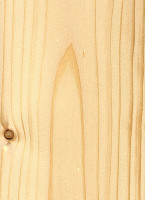 |
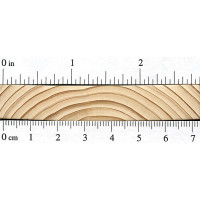 |
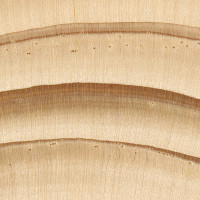 |
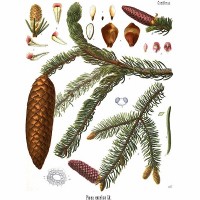 |





I add some pictures for the piece of mahogany I own.
That grain pattern in that first picture looks ring porous, so that might suggest it is something other than true Swietenia genus mahogany.
Actually it is quite smooth once you sand it, but I understand it is difficult to help me just by a picture, thanks.
Ring porous doesn’t have much to do with how smooth it feels. If you look at your first picture, and focus on the darker growth ring in the upper third of the image, you’ll see that the growth ring is actually made up of what appears to be a collection of small streaks. When viewed on the endgrain, these streaks are actually individual pores, thus the name ring-porous. Any grain lines on true mahogany are not made up of pores, i.e., mahogany is never ring-porous.
Ok, thanks a lot. It helps me to understand that the wood I have its not actually genus mahogany, I have doubts, becuse it smells like cedrela odorata, but where I bought it, they told me it was swietenia macrophylla, then I replied them that it smells like Cedrela, but they insisted the wood was mahogany, and I always was unsure, thank you for your help and time.
Have a nice day Eric.
Hi, first of all, congratulations for this excellent work you have been doing in all this time. In second place, I have a question, I have noticed that in the case of some species (like spruce, and even swietenia macrophylla) you write in the description dedicated to odor something like this: “No caracteristic odor”. However in some of those cases I have perceived a scent from those woods, so, my questions is, you mean they (the woods) actually have an odor, but it is not “caracteristic” or “distinctive”, in other words, the odor is not easy to describe; or you… Read more »
One thing to note is that the odor is for the wood when it is dry, not when it is green or wet. Some woods like elm can have a strong odor when green, but very little odor one dried.
Also, by “no characteristic odor” I mean that if there is an odor, it is very slight and generic. For example, if you cut wood, regardless of type, there always seems to be a very slight scent as the material is being worked.
Ok, thank you for take the time to answer.
And yes, I was talking about dry wood, when it is being working.
Thanks again, now I understand what you mean by “no caracteristic odor”.
Have a nice day Eric.
European Spruce (Picea abies), aka Alpine or German Spruce, can be found with Bear Claw pattern, which indicates the grain is vertical grain. It is often sold as Moon Spruce, where the company that harvests the Spruce does so during the Winter months when there’s less sap in the tree and during the period of the waning moon, when there’s less sap in the trees. Less sap means the wood should be more lively and dry quicker. From talking to several European Spruce suppliers, it sound like many of them cut their trees during the age old tradition as explained… Read more »